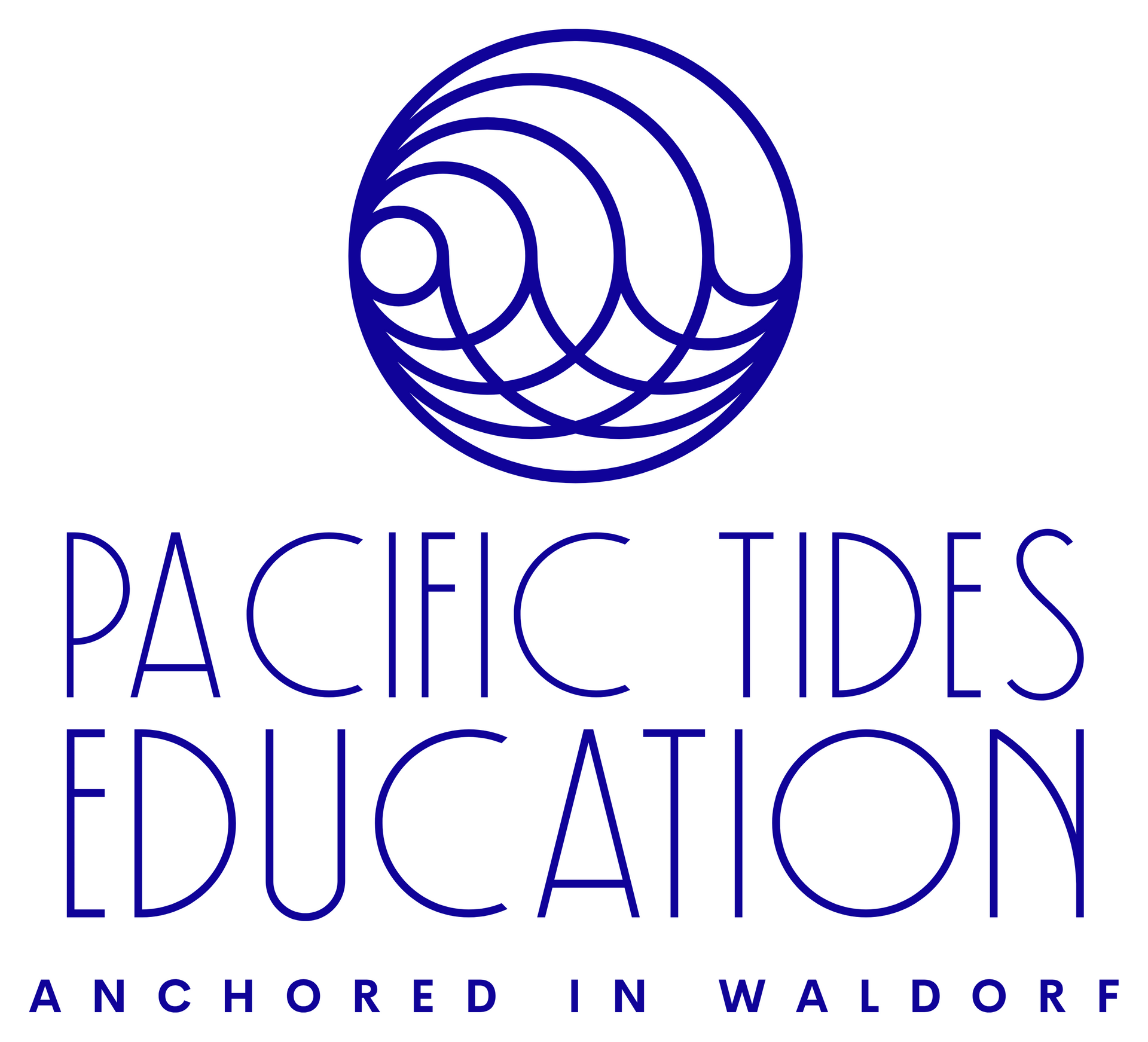grades 1 & 2
Grades 1-2 Curriculm Overview
In Grades 1 and 2, the Waldorf curriculum gently and purposefully lays the foundation for academic learning through storytelling, movement, artistic expression, and a deep connection to nature and rhythm. These early years honor the child’s innate sense of wonder, supporting their growth through rich, image-filled experiences that nourish the imagination and enliven learning.
In Grade 1, students are introduced to the alphabet, writing, and early reading through fairy tales and nature stories, while the fundamentals of mathematics are explored through imaginative stories, rhythmic movement, and hands-on activities. In Grade 2, language and math skills deepen, with reading becoming more fluent and arithmetic more complex. Fables and legends of inspiring individuals provide meaningful moral pictures that reflect the children’s emerging sense of right and wrong.
Throughout both grades, daily lessons are interwoven with form drawing, handwork, watercolor painting, music, and nature walks—developing fine motor skills, concentration, and an appreciation for beauty and harmony. Emphasis is placed on strong classroom rhythms, seasonal festivals, and collaborative social experiences that support the whole child—head, heart, and hands.
1st-2ND grade DEVELOPMENT
In Grades 1 and 2, children live deeply in their imaginations and experience the world as a place of wonder, rhythm, and moral clarity. They learn best through rich sensory experiences, imitation, and meaningful connection. At this age, the boundaries between inner life and outer reality are fluid—stories come alive, numbers dance, and letters sing. The child still learns primarily through movement, play, and image, and Waldorf education honors these qualities by offering a curriculum that is artistic, experiential, and deeply human.
First and second graders thrive on consistency, warmth, and clear structure. Daily and seasonal rhythms help them feel secure and oriented, while recurring festivals and classroom routines foster a sense of belonging. The early academic work is carefully embedded in story and artistic activity—fairy tales, fables, and nature stories provide the foundation for literacy and early reading, while math concepts are introduced through imaginative tales, rhythmic counting, and physical movement.
Developmentally, these years are a time of imitation, curiosity, and the gradual awakening of memory and attention. Children are learning how to be part of a group, how to follow through with tasks, and how to find joy and meaning in learning. Their moral sense is guided through stories that illustrate clear images of good and bad, helping to gently cultivate inner discernment.
Waldorf education in Grades 1 and 2 nurtures this phase with reverence, joy, and artistry—helping children build confidence, healthy habits, and a deep love for the world of learning that will carry them forward.
Grades 1-2
Scope and Sequence
Grade 1
The Foundation of Imagination and Language
Language Arts:
- Reading & Writing: Introduction to letter sounds, forming letters, and basic reading skills through stories, rhymes, and oral language games. Students begin to read simple stories and practice writing using form drawing and blackboard work.
- Storytelling & Oral Skills: Oral storytelling, reciting poems, and dictation are key methods. Stories often come from folk tales, fairy tales, and nature stories that captivate the imagination.
Mathematics:
- Number Sense & Arithmetic: Introduction to numbers, counting, and the four processes (addition, subtraction, multiplication, and division). Students work with numbers through rhythm, movement, and artistic activities to understand the qualities of numbers.
- Patterns & Geometry: Basic introduction to geometric shapes through drawing and modeling with clay.
The Arts:
- Drawing & Painting: Early lessons in color, form, and basic drawing. Students explore freehand drawing with a focus on shapes, symmetry, and patterns.
- Music: Singing simple songs, learning folk music, and beginning to play the pentatonic flute/recorder.
World & Nature Studies:
- Nature Walks & Observation: Connection to the natural world through nature walks, observing the seasons, and drawing plants and animals. The emphasis is on developing wonder and reverence for the environment.
- Home & Community: Exploring the immediate surroundings of the child, including the home, school, and local environment.
Grade 2
Building Foundations in Literacy and Numeracy
Language Arts:
- Reading & Writing: Expansion into reading more complex stories, building vocabulary, and exploring word families. Writing skills are developed with more emphasis on dictation and copying.
- Fairy Tales & Legends: Stories from around the world, particularly fables, legends, and stories of saints, are used to develop language skills and moral understanding. Students explore the elements of storytelling.
Mathematics:
- Addition & Subtraction: Mastery of addition and subtraction through practical activities, mental math, and story problems.
- Multiplication & Division: Continued practice and understanding of multiplication and division through rhythmic counting and storytelling, with emphasis on times tables.
The Arts:
- Drawing & Painting: Focus on human and animal forms, as well as geometric shapes. Students begin to draw from life, capturing both movement and stillness.

